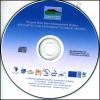River basins
Foro Agua Santa 2011 : construyendo una visión y acción compartarget_idas : memoria

Sobre la cuenca del río Santa se han realizado numerosos foros y se han emitarget_ido diversas declaraciones,1 orientados a promover el mejoramiento de su gestión. El Foro Agua Santa 2011 reconoce todas las iniciativas realizadas sobre gestión ambiental y del recurso hídrico en la cuenca, pero asume que se requieren aún más y mayores esfuerzos.
Medidas de adaptación frente al cambio climático en la cuenca del río Santa

Parte de la serie de folletos informativos producida en el marco del proyecto Adaptación de la gestión de los recursos hídricos en la cuenca del río Santa, por UICN-SUR. Incluye información sobre mecanismos para la implementación de medidas de mitigación y adaptación; esta última en los campos tecnológico, cultural, político, entre otros.
Los impactos del cambio climático en las funciones hidrológicas de la cuenca del río Santa

Parte de la serie de folletos informativos producida en el marco del proyecto Adaptación de la gestión de los recursos hídricos en la cuenca del río Santa, por UICN-SUR. Incluye información sobre las evidencias del cambio climático, los impactos de este fenómeno en los ecosistemas, calidad y cantarget_idad de agua, así como la pérdida de reservas de agua y retroceso glacial. También analiza las consecuencias de la alteración de las funciones hidrológicas en la cuenca.
Características de la cuenca del río Santa

Parte de la serie de folletos informativos producida en el marco del proyecto Adaptación de la gestión de los recursos hídricos en la cuenca del río Santa, por UICN-SUR. Incluye información sobre las características generales de esta cuenca, localizada en la costa central del Perú. (ubicación, extensión, aspectos político-administrativos, ecosistemas andinos y costeros, servicios ambientales), ambientales y socioeconómicas.
Water vision to action : catalyzing change through the IUCN Water & Nature Initiative : results report

Bonde la Pangani : Uchambuzi wa Hali Halisi (Toleo la pili)

The objectives of the first edition of the Pangani situation analysis included identifying the resources that occupy the Pangani River Basin (PRB) and the processes and events that affect them, and identifying a series of broad action areas wherein interventions may feasibly be delivered. A second edition was needed to take into account the operation of the Water Resource Management Act in July 2009.
Pangani River Basin Management Project integrated flow assessment technical reports

The Pangani River Basin Management Project (2005-2010) has generated technical information (packaged in the reports appearing on this CD). The project consisted of an integrated flows assessment, strengthening water governance and community participation, assessing vulnerability to climate change and promoting appropriate adaptations and supporting integrated water management planning for the basin.
Pangani River system : future of the basin report

In 2002, a detailed situation analysis of water and environmental issues was done for the Pangani Basin. Following that, a series of pilot projects funded by the Water and Nature Initiative (WANI) of IUCN and by DFID led to the development of a Pangani River Basin Management Project (PRBMP) that continued until 2011. In the final phase of the project, climate change was investigated further.
Flow : the essentials of environmental flows

An environmental flow is the water regime provided within a river, wetland or coastal zone to maintain ecosystems and their benefits where there are competing water uses and where flows are regulated. Pioneering efforts in South Africa, Australia and the United States have shown that the process to establish them poses great challenges.
